Collecting Comme
Rex Butler
Rei Kawakubo's first Comme des Garçons show in Paris in April 1981 is now a legendary event in the history of fashion. Mounted unofficially at the Intercontinental Hotel during Prêt-à-Porter week and featuring just five models—she had not received the favour of the Chambre Syndicale de la Couture Parisienne, which decided, like the French Academy the century before, who would show during fashion week and who would not—Kawakubo made her debut alongside Yohji Yamamoto, her romantic partner at the time.
Kawakubo had begun Comme in 1969 after studying Aesthetics at Keio University and then working as a freelance fashion stylist. Comme the label started and held its first shows in Tokyo in 1975. In 1979 Kawakubo famously decided on a change of direction for the label (that is when real aficionados locate the turning point) and then the whole world changed in 1981.
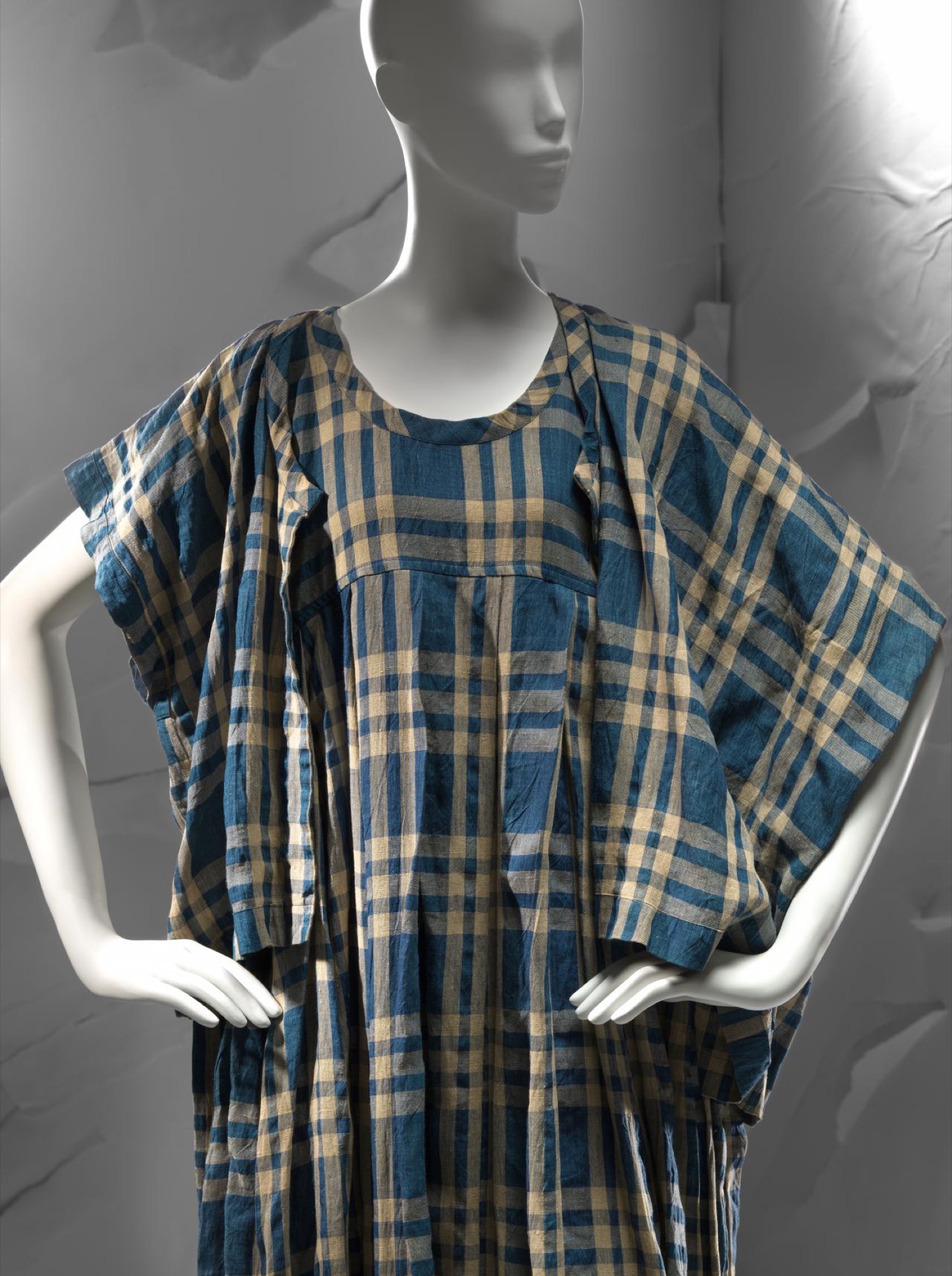
The show with Yamamoto was not an immediate success. The first French fashion writers did not react positively to the clothes and the haute couture designers and powerful institutional figures who made up the Chambre Syndicale exhibited no great enthusiasm and certainly no immediate desire to make Kawakubo a member herself.
When people did eventually respond to Kawakubo and Yamamoto's show, it was invariably in terms of some Japanese “invasion”, the fear that a number of Japanese designers – both Kenzo and Issey Miyake were already working in Paris – were coming to take over what had always been understood as an exclusively European field of cultural expression.
But eventually – Kawakubo showed her Pirates collection in Paris later that year and has shown there every season since – the audience got the message: that exhibition in early 1981 was absolutely decisive, a turning point in the history and theory of fashion.
Collecting Comme, which opened this week at the National Gallery of Victoria, grasps this entirely. In one of the didactics for the show, it speaks about the “logic” at stake in Kawakubo's clothes, and that is completely the case. Kawakubo's practice marks a decisive break with notions of “taste”, “judgement” and even “beauty”—of course, until then seen as essential to any thinking about fashion—and replaces them with process, structure and most importantly the inseparability of fashion and anti-fashion. Nothing just is in Kawakubo's work, the expression of a trained but inexplicable taste or sensibility, but must always be understood in terms of that opposite it stands in for and in due course will become. Fashion becomes an effect not of taste but of signification, and henceforth the great challenge of fashion will be not how to make something fashionable but how to make something unfashionable or somehow to evade or outwit the logic of fashion, which will inevitably turn anti-fashion back into itself.
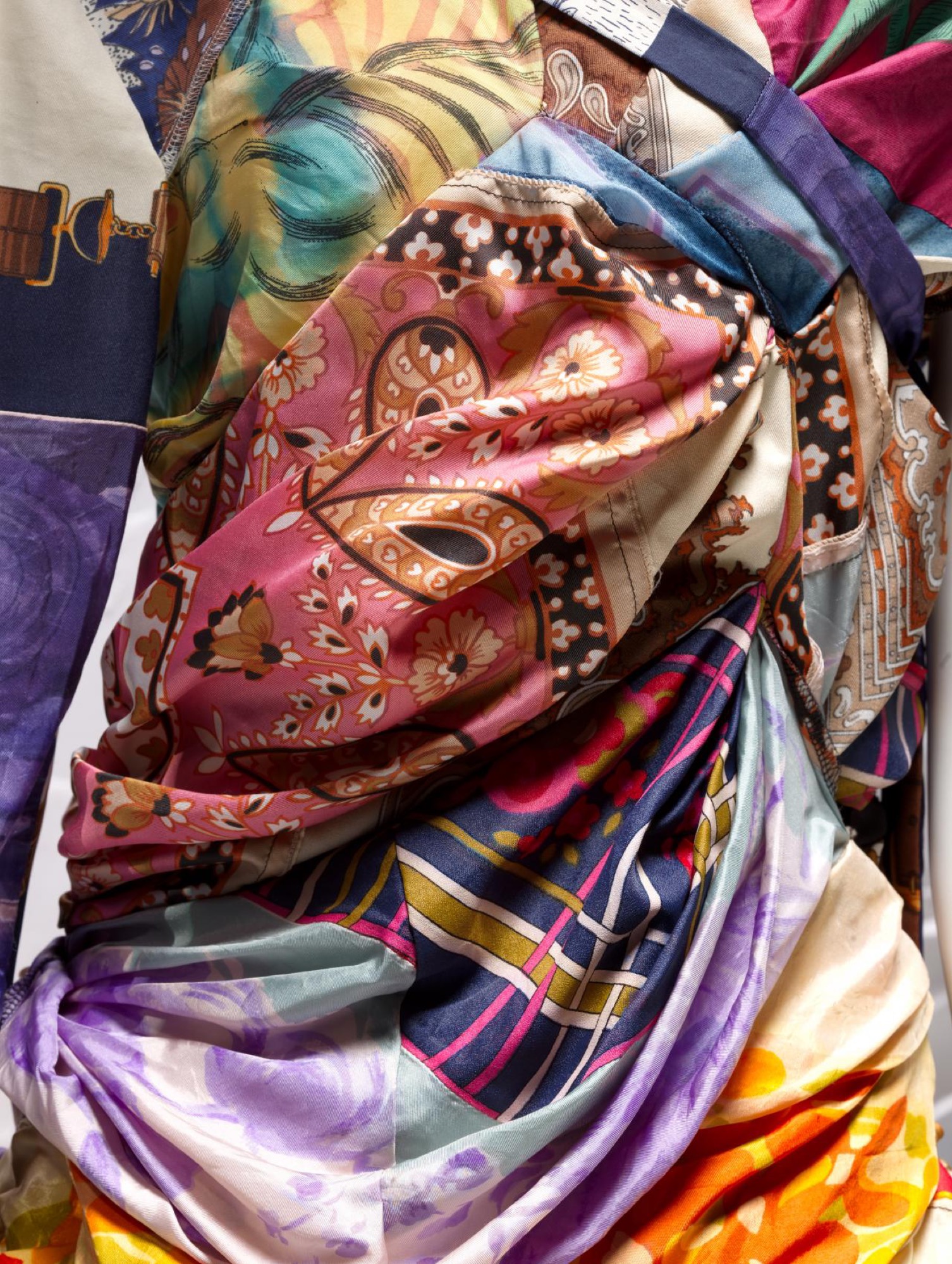
Rei Kawakubo, (designer)
Dress and sleeve 2011 (detail)
Hybrid collection, autumn–winter 2011–12
Promised gift of Takamasa Takahashi, 2019
© Comme des Garçons
Collecting Comme brilliantly realises this in its two-part hang. The first half of the show, organised in a series of orthodox window displays running parallel to each other, offers a chronological account of Kawakubo's work from her 1982 Indigo Dye and Twist show through to her 2011 Hybrid collection. At the end of the first half of the installation, we are left with the fragments of Hybrid, mounted like soft sculptures inside glass frames.
Across the other side of the corridor, beginning the second half of the show, we have the full dress from the Hybrid collection, which was literally put together from the scraps of previous seasons in a tight checkerboard of florals, paisleys and plaid, all held together by a tousled black silk ribbon running through it, lending it a kind of momentary unity. The didactic for the exhibition at this point reads “A new Kawakubo collection might begin with a crumpled wad of paper, an abstract phrase or an instruction to, in Kawakubo's words, 'start with something perfect and go backwards'”—and we can absolutely see this here with the relationship between the two halves of the show able to be read both as the putting together of these fragments to produce a finished dress and the taking apart of this dress to reveal its constituent fragments.
It is this passageway that leads us into the second half of the show, which is devoted not to any chronological history of Kawakubo's clothing but to an analysis of its “logic”. Indeed, this second half is headed—to use one of the words Kawakubo is most often associated with—'Construction / Destruction', and here we no longer have the usual fashion display with a series of plastic mannequins standing next to each other spotlit from below, but mannequins arrayed in a series of provisional plywood boxes that jut irregularly out of the walls, illuminated not in a neutral white but a vivid red or indigo, seemingly cast anywhere.
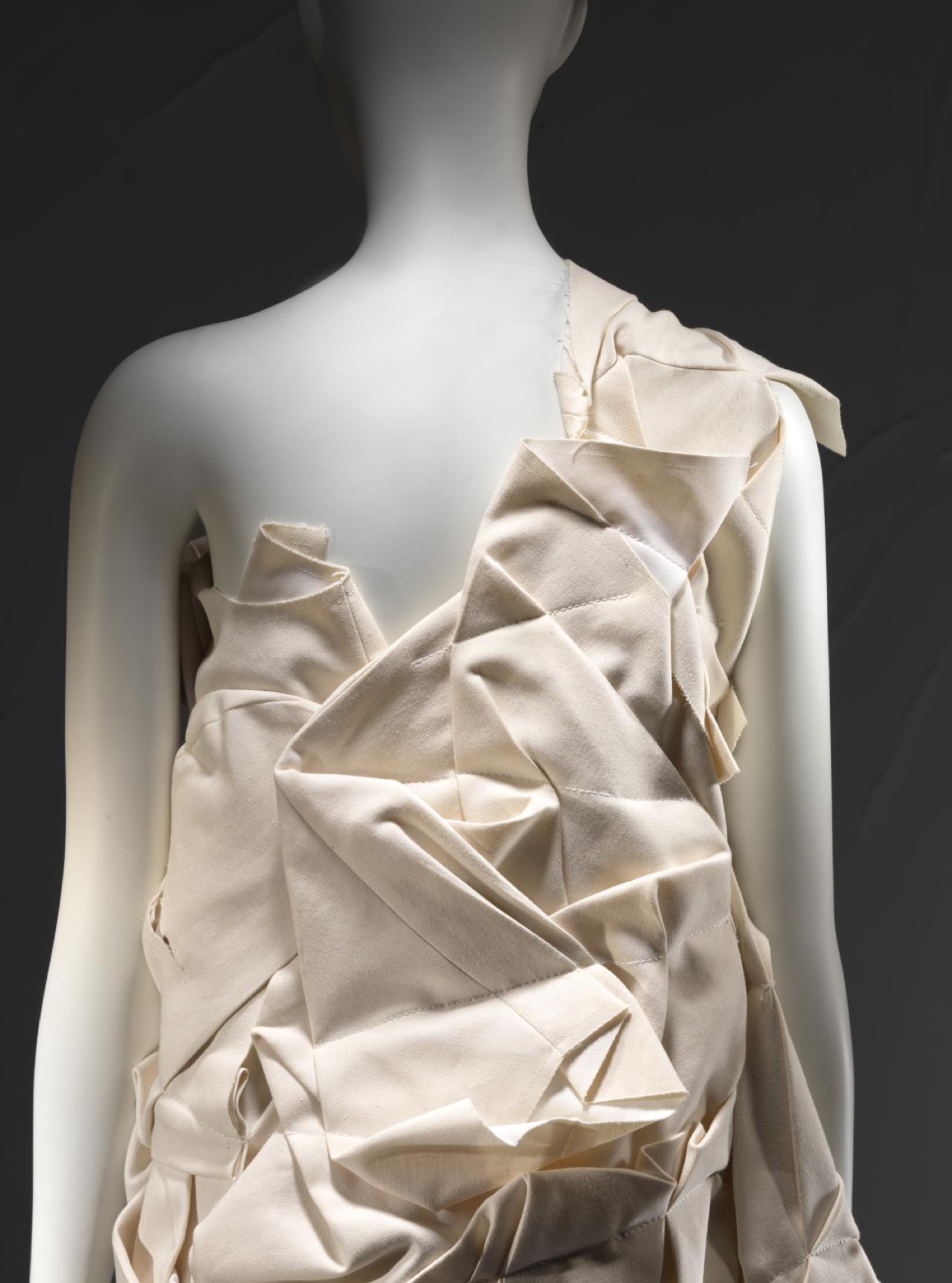
Rei Kawakubo (designer)
Dress 2012 (detail)
Crush collection, spring–summer 2013
Promised gift of Takamasa Takahashi, 2019
© Comme des Garçons
We have here a series of unravellings of the orthodoxies of both fashion and fashion display, and then finally in the latter part of Kawakubo's career a kind of unwilling or unavoidable self-stylisation or self-canonisation, a final fall into fashion. Take, for instance, the linen, wool and polyester vest and dress for the 2012 Crush collection. Here we have the same cutting up and reassembling of constituent parts as Hybrid, but instead of the clashing patterns of the dress there we have what could appear simply a silky ruched all-white surface.
Or take the thick woollen red and black surfaces of the 2006 Cubisme collection, which in typical Kawakubo style overlap and build up so that the body underneath is covered over and there is no residual feminine form to play on. Beautifully and wittily, much like the technique of Cubist passage itself, sometimes a red surface is on top of a black surface or a black surface on top of a red surface, but equally it can be a black surface that is on top of another black surface, thus producing a tantalising confusion between two- and three- dimensionality. (And the translucent red nylon undergarments and stockings that both hide and reveal the body beneath could easily be read as a play on those white cotton sheets the prostitutes wrap around themselves in Picasso's Demoiselles d'Avignon.)
But before this final elegant stability, Kawakubo enacted some of the greatest innovations and destructions (which are always the other side of deconstruction) in the history of fashion. The exhibition includes a number of examples from the 1997 Body meets Dress - Dress meets Body show, aka, the infamous “bump” dresses, in which Kawakubo added a series of arbitrarily placed pillow-like shapes beneath the stretchy gingham material to break with the silhouette of the body. (It is a gesture repeated in slightly more elegant form in the dresses for the 2004 Abstract Excellence show.)
This too is one of the outstandingly provocative moments in contemporary fashion, for if Kawakubo had always avoided playing to the feminine silhouette with the flat, plain and thick surfaces of her clothes, this is an absolutely direct attack on the entire logic of both modern fashion (Dior, Balmain, Vionnet) and the classical tradition of drapery that came before that. Body meets Dress - Dress meets Body is an ingenious title because in that hyphen between its two halves there is a suggestion of that parergonal space that always separates us from what we wear, and it is precisely this mismatch, this incommensurability between body and clothing, that Kawakubo makes her subject. (It is not at all surprising that one of her earliest shows was called simply Holes, and so many of her clothes feature a kind of hole or space either within the garment or between the garment and the body.)
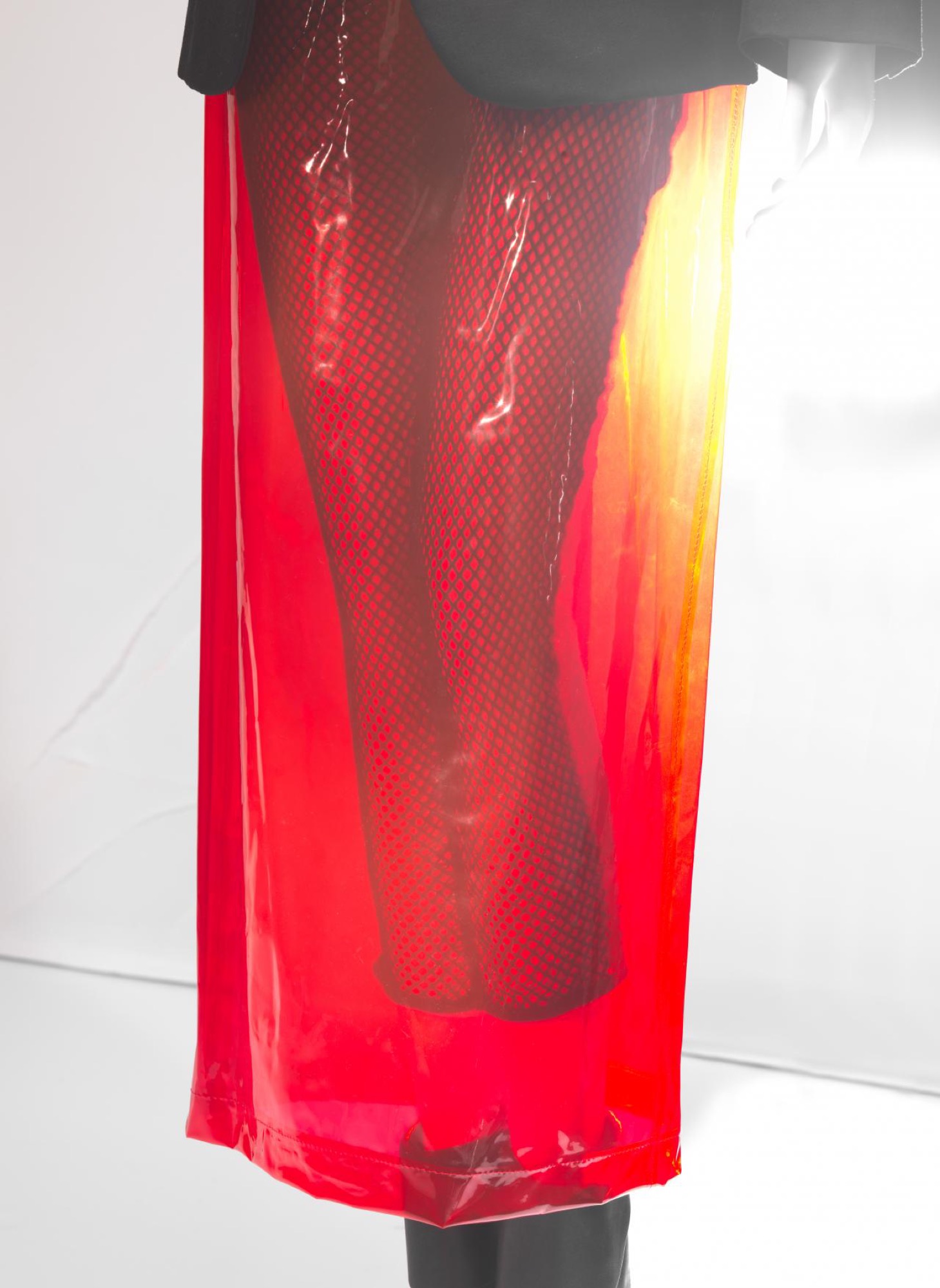
Rei Kawakubo (designer)
Jacket, bodysuit, skirt, leggings and boots 1991 (detail)
Chic Punk collection, autumn–winter 1991–92
Collection of Takamasa Takahashi
© Comme des Garçons
Or equally take Kawakubo's oxymoronically titled 1991 show Chic Punk, which belatedly and surely self-parodically features fishnet, leather, zips and bondage straps—so far, so Vivienne Westwood—but is also notable for its putting together of houndstooth, tuille and black leather, which entirely paves for way for someone like Alexander McQueen and his Highland Rape (1995) and McQueensbury Rules (2009) collections. And it is equally Kawakubo's practice of cutting up and recombining past collections, as seen in Hybrid, that leads to designers like Belgium's Martin Margiela and the Antwerp Six.
One final example, and perhaps my favourite, is the costume from 2015's Blood and Roses that greets you as you enter the show, with the top made up of a series of asymmetrical red hoops and the bottom a series of looped scallops, where if you look closely—again the Body meets Dress theme—there is just the tiniest polyester backing behind the thick red wool, holding it stiffly in place. And in the runway video that accompanies the dress the model wears a crazy yellow cotton gauze headdress supported by wire and has that famous bowed red lipstick that does not quite reach the sides of the mouth (and, my goodness, I saw a lot of that on kids trick or treating this Halloween).
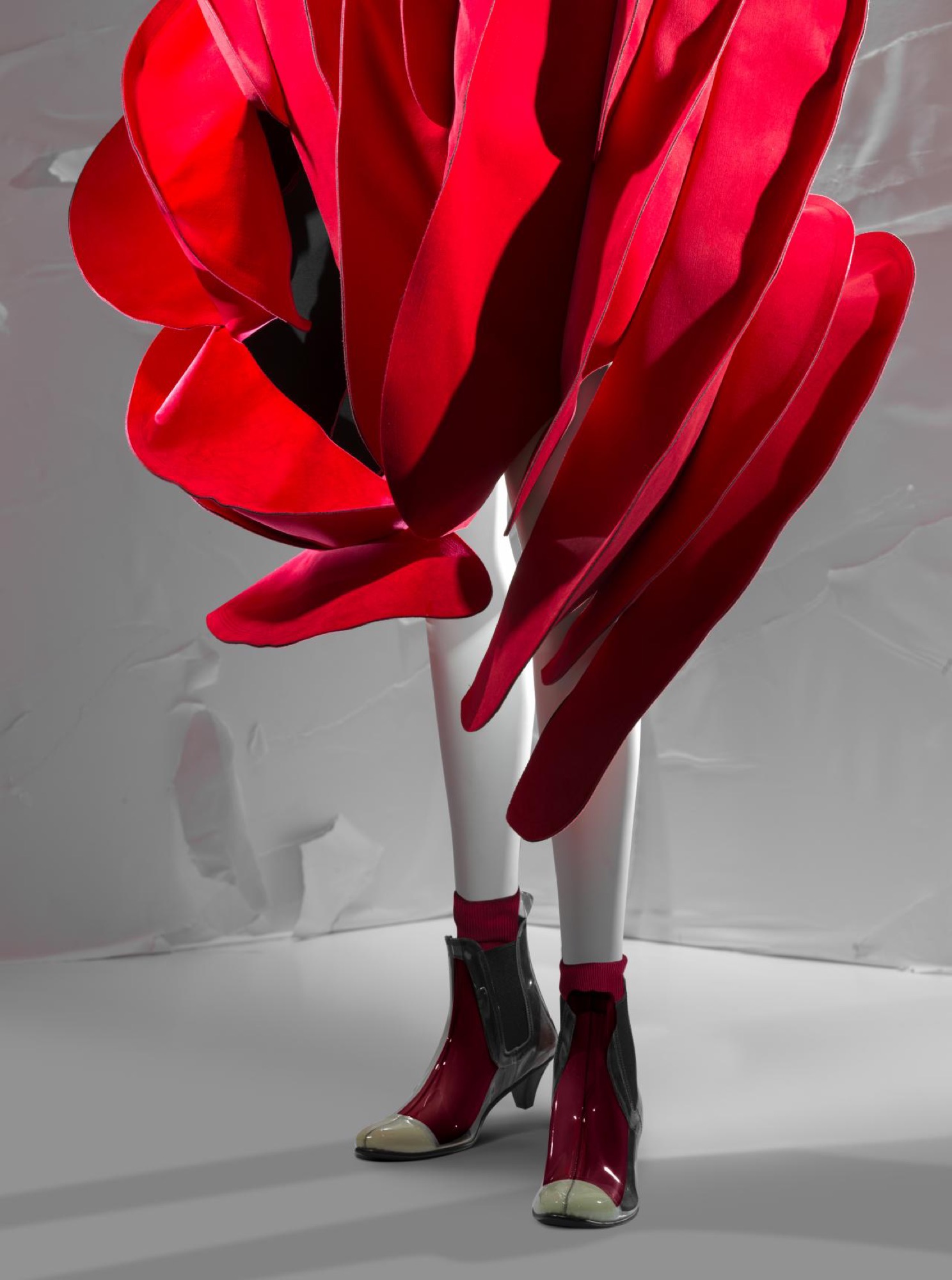
Rei Kawakubo (designer)
Cape, shorts, socks and boots 2014 (detail)
Blood and Roses collection spring–summer 2015
Collection of Takamasa Takahashi
© Comme des Garçons
Kawakubo once said, “If you have total freedom to design, you won't get anything interesting. So I give myself restraint in order to kind of push myself through, to create something new”, and it is this sense of fashion as a logical system, of restraints that create possibility and possibility that leads to restraints, that she inaugurates. Her work is that turning point after which making fashion and thinking about fashion are the same, for to speak about “theory” with regard to her work is already to say that Kawakubo is a fashion theorist and her work a theory of fashion. The titles of her collections can seem parodic or a kind of refusal—Liberation from Tailoring, Modern Sweetness, Unfinished, Ultrasimple, Adult Punk, Bad Taste and Not Making Clothing—but she ultimately knows none of these are sufficient: that the “truth” of fashion is far more abstract, far more difficult to pin down than this, which remains within the logic of fashion itself.
This extraordinary exhibition, the best at the NGV this year, is the result of a bequest by Tamasa Takahashi, who has been collecting Comme since 1978. There are some sixty of his garments in the show, with another ten or so borrowed from elsewhere. The show is not to be missed because Kawakubo is undoubtedly one of the major cultural figures of the late twentieth century. And as a bonus pleasure, the soundtrack to the show—someone at the NGV obviously has great taste—even features The Fall's Flat of Angles, which matches the exhibition in its bringing together of opposites and its hint of transcendence, if we switch the letters of the last word of the title. It is almost enough, but not quite, to make you forgive the huge statue by Kaws in the foyer. It's weird that the same institution can put on something so sublime in one space and such vapid pap in another. Flat of angles.
Rex Butler teaches Art History in the Faculty of Art Design and Architecture at Monash University.


